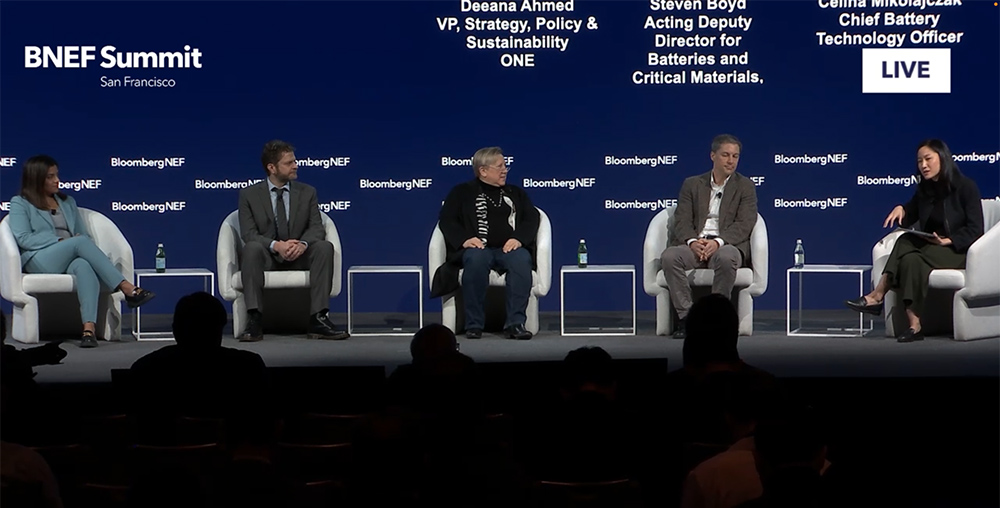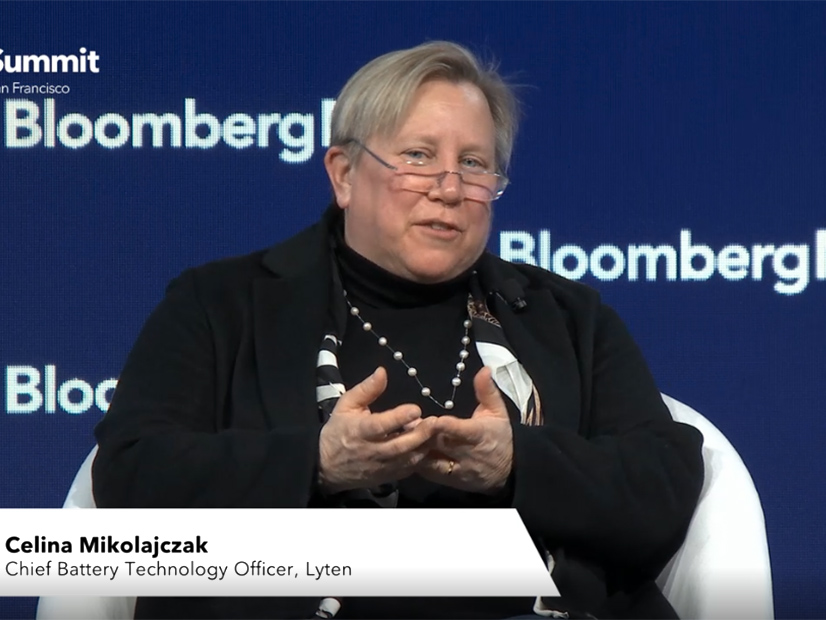Three new battery technologies now under intense development in the U.S. may be key to expanding production of electric vehicles with longer ranges and faster charging times while challenging Chinese dominance of the global market.
Michigan-based Our Next Energy (ONE) and two California-based companies, Lyten and Natron Energy, explained their technologies and growth plans at BloombergNEF’s annual summit Tuesday.
Lyten, a Silicon Valley chemical manufacturer, is developing a lithium-sulfur battery it expects to market in 2025 or 2026.
Natron has developed and is already manufacturing UL-listed sodium-ion batteries that, while slightly less energy-dense than lithium-ion batteries, are nonflammable and not prone to overheating.
Deeana Ahmed, vice president of ONE, said the company has developed a battery capable of powering an EV for 600 miles per charge. The company’s battery is anode-free and built on chemistry designed to use less nickel and cobalt and more manganese, which is more abundant.

“We’ve been focused on the development of a North American supply chain since the founding of the company in July of 2020,” Ahmed said. “I think the momentum that we’ve seen has made that all the more plausible and possible, because we believe that by localizing our supply chain, we can then begin to approach those prices that you’re talking about with the scale up. …
“We’re partnering with BMW to demonstrate the 600 miles of range of … the platform this year. What we’re looking at is how do we grow the capacity or manufacturing capacity and maintain a conservative margin and then pass down the savings,” she said.
ONE expects “to bring manufacturing capacity online by 2024,” she said, adding that the company has already announced it will build a “gigafactory” in Michigan in the future.
The battery will “will have a very high cell to pack volumetric efficiency that allows that LFP [lithium iron phosphate] chemistry battery pack to be market-leading in terms of systems of level energy density, even when compared to a nickel cobalt battery product.”
Celina Mikolajczak, the chief battery officer at Lyten, said the company is developing lithium-sulfur battery technology even though combining the two elements “is a very difficult chemistry.”
Noting that lithium-ion batteries, especially advanced versions with higher nickel cathodes and lithium metal anodes, “are engineering wonders,” she said their high production costs mean they don’t provide “electrification for all.”
“And the reason is that there is a limited amount of nickel. And when you look at lithium sulfur, you say, ‘well, there’s a lot of sulfur out in the world. And it is very, very cheap. OK, if I can make that cell work, I make electrification something that’s abundant.’”
To tame the combination of the two elements, the company developed a graphene nanostructure carbon system that effectively controls the sulfur, she said. “The graphene helps us hold on to that sulfur, control it and make a practical battery.
“It gives us a lot of manufacturing opportunities and allows us to leverage a lot of the existing manufacturing technology. … It’s a wickedly hard chemistry, but the opportunity with it is rather incredible. It really means that we move away from petroleum as our transportation source that we allow electrification of literally everything.”
Colin Wessells, co-founder and CEO of Natron, said the company will begin mass manufacturing its sodium-ion battery in a new Michigan plant beginning this summer.
“We’ve really focused on the sodium-ion system, because it allows you to extract extraordinarily high power for energy stored,” Wessells said. “In some of our markets, some of our customers are data centers and microgrids; we have customers that are running at a 50-to-1 power-to-energy ratio.”


